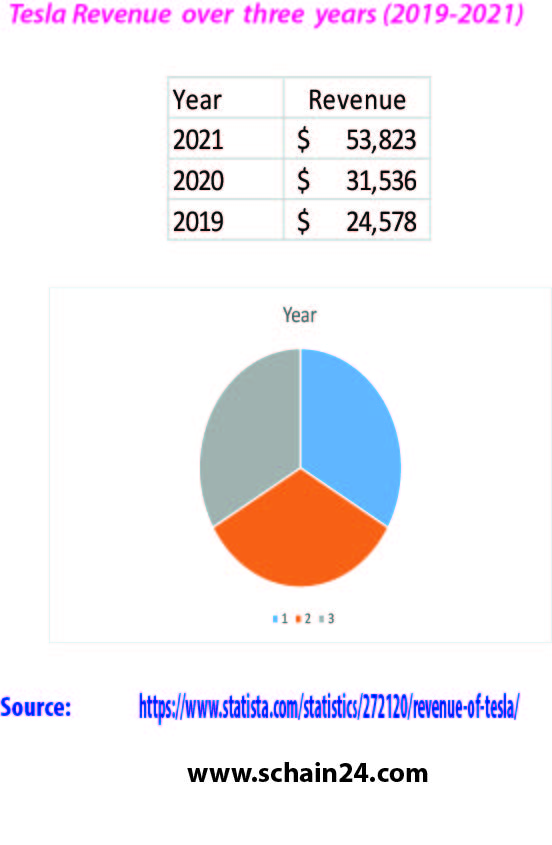The industry`s annual semiconductor sales revenue has since grown to over $481 billion, as of 2018. In 2021, the sales of semiconductors reached a record $555.9 billion, up 26.2 percent with sales in China reaching $192.5 billion, according to the Semiconductor Industry Association. To make the semiconductor supply chain sustainable, companies need to focus on environmental processes, social practices, and the economy. In order to generate a sustainable future, supply chains should work to improve the manufacturing process and quality, reduce the environmental impact, and protect labor rights. Take time to learn about semiconductor supply chains so you are informed of their impact on the technological industry. As strains between China and the US worsen over Taiwan, and countries across the world reassess connections with Russia following its war In Ukraine, efforts to de-risk chip technologies are causing a realignment of supply chains according to geopolitical relations.
Tag: Management of Cross-Functional Drivers in a Supply Chain
Vaccine Supply Chain Management in covid-19 perspective
It has been found that 27.97 million vaccines are being administered every day. But only 2.3% of people in low-income countries received at least a first vaccine by September 2021, according to official reports from national health agencies, which is collated by Our World in Data. Concerns exist about whether some countries producing vaccines may impose protectionist controls by export restrictions. So that it would stockpile a COVID 19 vaccine for their own population. In June, the Serum Institute of India – a major manufacturer of global vaccines – reached a licensing agreement with AstraZeneca to make 1 billion doses of vaccine for low-and-middle-income countries, of which half of the doses would go to India. This is an issue of supply chain management to manufacture and send it to the end-user.In the United States, restrictions on vaccine eligibility have been lowered. And wealthier individuals from other countries with unhurried vaccination rates were reportedly traveling to the United States to be vaccinated.
United Parcel Services. Inc. (UPS): An SCM case study
The American Messenger Company, founded in 1907, primarily focused on package delivery to retail stores and special delivery mail for the U.S. Post Office. In 1913, it acquired a Model T Ford as its first delivery vehicle. In 1919, the company expanded to Oakland, California, changing its name to United Parcel Service. UPS became one of the only companies in the United States to offer common carrier service, expanding to areas up to 125 miles outside the city. UPS faced direct competition with USPS and the Interstate Commerce Commission, but the common carrier service was applied in cities where UPS could use the service without the authority of the ICC and state commerce commissions. In 1953, UPS resumed air service called UPS Blue Label Air. UPS expanded its operations to serve all 48 contiguous states in the United States, Canada, and West Germany. In 1991, UPS relocated its headquarters to Sandy Springs, Georgia, and acquired Haulfast and Carryfast, rebranding them UPS Supply Chain Solutions. UPS offers international package services to over 220 countries and territories worldwide. The company faces competition from major domestic carriers like the United States Postal Service (USPS) and FedEx, as well as regional carriers like OnTrac and LSO. UPS has partnered with the US Postal Service to offer UPS Mail Innovations and “SurePost,” which use the UPS Ground network to deliver packages weighing under 10 pounds to the nearest UPS Package Center. UPS has received a “striding” environmental scorecard and received the Clean Air Excellence Award from the US Environmental Protection Agency.
Sustainable Procurement: A Concept Used In SCM And Beyond.
There are different levels of focus in the dimensions of sustainability and also sustainable procurement. Focus on the supply chain network entails managing and balancing the supplier portfolio. The impact of fair trade or eco-labels can be on end-user buying behavior. CSR purchasing policies and CSR functions are integrated with purchasing.
Supply Chain Analytics: A conceptual discussion
A study supports the concept of an analytics culture built on advanced data management processes, technologies, and talent. SCAG can strengthen firms’ core features, such as ambidexterity, adaptability, and swiftness, enabling them to upgrade their performance in terms of sales, profit, and return on investment. SCAC can improve end-to-end supply chain productivity and eliminate market fragmentation. The study finds a significant positive relationship between SCAC and firm performance, with a mediating effect on supply chain agility. This could guide managers in investing in SCAC and considering complementary assets like supply chain agility to achieve a continued competitive advantage. SCAC can accelerate FPER by establishing robust agility in operations.
Weather impacts on supply chain management: An analysis
Supply chains engender great opportunities for the weather forecasting industry to advance. Those who can utilize these kinds of forecasting, are beneficial to some extent and preserved from loss of weather disruptions. On one hand, the impact of weather in many cases increases the cost of the supply chain, on the other hand, it decrements the visibility of the supply chain due to inclement weather. Various weather stations measure weather data such as rainfall, shipping, etc. Weather cognate courses are being evolved for supply chain managers to tackle weather disruption issues well. The other utilization of weather reports from third-party companies can help forecast early solutions and point out the affected areas.
Tesla’s supply chain and logistics: A case study
The company was incorporated as Tesla Motors, Inc. on July 1, 2003, by Martin Eberhard and Marc Tarpenning. Eberhard verbalized he wanted to build a car manufacturer that is additionally a technology company, with its core technologies as the battery, the computer software, and the proprietary motor. Tesla Motors has become kenned for engendering well-designed and innovative electric conveyances. To assemble its cars, Tesla sources components from a range of Tesla suppliers. Some suppliers provide mundane car components; others provide electric conveyance components.







